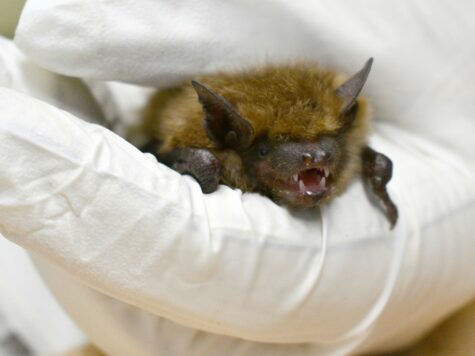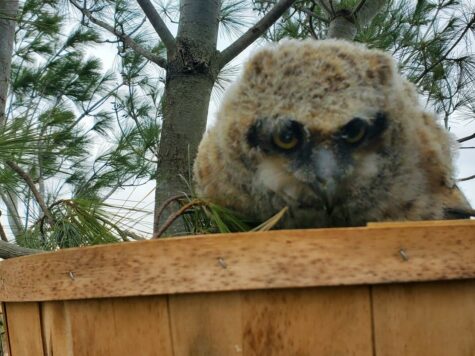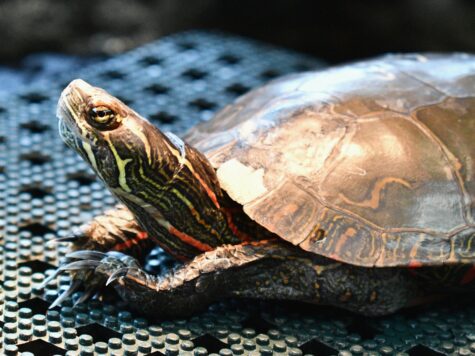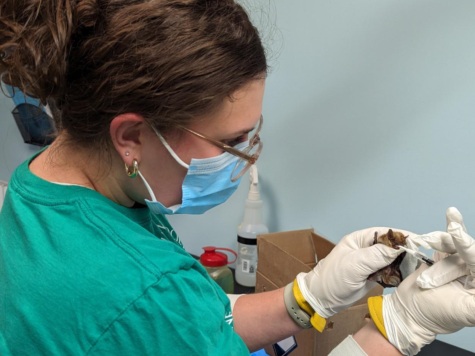Dane County Humane Society's Wildlife Center has admitted 25 treefrogs for rehabilitation since 2014. Treefrogs are often located in soil, vegetation, pots or containers after plants have been moved indoors for the winter. Some are injured from yard equipment such as weed whackers, and predation injuries such as animal bites. Most common concerns are dehydration and emaciation in the winter, and puncture wounds and lacerations in the summer. Rehabilitation is different for each frog but can be anywhere from a few weeks to a few months. If rehabilitation is successful, weather conditions determine if a rehabilitated frog may be released back into the wild, so a patient may stay a little longer in our care if the conditions are not suitable.

More than 800 species of treefrogs exist in the world, but only two live in Wisconsin: the gray treefrog (also known as the eastern gray treefrog) and Cope’s gray treefrog (also known as the southern gray treefrog). Both have similar features.
Both have the ability to change color to blend in with their environment and can appear in mottled shades of gray, brown, and green. When warm, Cope’s gray treefrog may lose its mottling pattern, while the gray treefrog always appears mottled. Cope’s gray treefrog is also slightly smaller and has smoother skin, but the easiest way to tell the two apart is by listening to their calls.

What makes treefrogs different from other types of frogs?
Other frogs, such as bullfrogs and green frogs, are considered true frogs, which are long and slender, and have smooth skin, webbed feet, and powerful back legs. Many live in or near water.
Treefrogs have sticky toe pads to help them grip surfaces and extra cartilage between their last two toes that makes them more flexible for climbing. While most treefrogs lay their eggs in or near water, they spend the majority of their lives in trees or similar vegetation.
Both species dwell throughout the state. Gray treefrogs prefer woodland, swamp, wetlands, and pine barrens, while Cope’s gray treefrogs are more often found at the edges of forests, woodlands, and in meadows or oak savannah. Cope’s gray treefrogs prefer brush over trees and are almost always found perched in vegetation and off of the ground. Both live on the same diet of crickets, grasshoppers, moths, beetles, ants, and flies and forage.

The survival of Wisconsin treefrogs has its challenges. To protect themselves against predators, they are most active at night, and rely on their abilities to camouflage, climb, and cling to surfaces. An irritating toxin secreted from the skin also provides protection. Despite these defenses, many species of birds, mammals, snakes, and even other frogs eat treefrogs.
They survive Wisconsin winters by living on the ground under natural debris and becoming 80% frozen by producing glycerol in their blood, which acts as a natural anti-freeze. At this stage their hearts stop beating, and they stop breathing until they thaw in the spring.
Challenges for all frog species in Wisconsin include habitat loss and interference due to human activity. While the two Wisconsin treefrogs are not yet species of concern, other frog species in the state and globally are facing endangerment due to loss and destruction of habitat. Like many wild animals, frogs have had to adapt to living near humans, but with that comes additional risk. Dane County Humane Society's Wildlife Center is proud to be part of a small, but crucial, conservation effort of rehabilitating and releasing treefrogs back to the environment with the hope that they can continue to support their populations.






